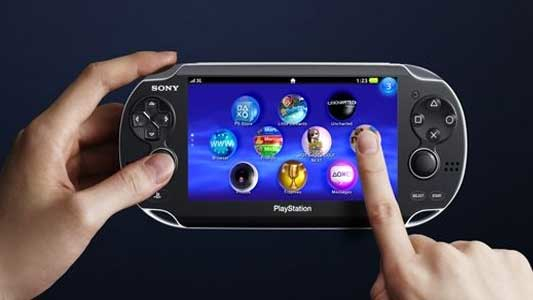Below is a guest post by Taggart White. Taggart is a writer for CableTV.com. He typically writes about business, technology, and sports. You can follow him on Twitter: @taggartwhite.
For all their efforts to keep up with the rapid-fire pace of consumer technology, it’s sometimes amazing how large companies, such as Sony, seem totally unaware of the larger consumer electronics context going on around them. The nature of handheld games today is one of Angry Birds and other cheap downloadable titles. Products like Apple’s iPhone and iPad fill the role for the majority of people as their large investment in a handheld electronic device; this is increasingly the accepted standard. Nintendo’s Gameboy and other handhelds may have had some novelty back in the 90s when they were unique for being a handheld electronic device, but they now occupy the same space as many other popular and more contemporary items.

A handheld game system can’t sustain itself the way it used to and take for granted its appeal as a novelty. Sony is selling a product so standard, and at this point almost archaic in design, that the company seems stuck in a past established by Nintendo and left behind over a decade ago. Sony’s latest attempt at succeeding in today’s handheld gaming market is the PlayStation Vita, which will be released in the U.S. on February 22, 2012. Here are five reasons why the PlayStation Vita will be yet another bust for Sony.
Too Expensive: $249 or $299 plus accessories & games ($30-$50)
Part of the crux of the issue is that Sony is asking for a big initial investment and then other large subsequent investments. This is excusable on consoles, where they sit as a mainstay in the living room, but gaming handhelds have always been accessories, and now, in comparison to smartphones and tablets, they are becoming something esoteric, a product only reviewed and consumed by established gamers. Further pushing your handheld out of the arena of the causal gamer with high prices not only makes the initial investment harder to swallow, it sends a message that this product from the ground up is only designed for the loyal, or obsessive, Sony fan.
No backward compatibility for previous PSP owners who spent hundreds of dollars on games.
Backwards compatibility has the obvious advantage of making more games available right at the outset of the console’s life, not only that, it makes all those old games you own playable on a shiny new system. Even more importantly, backwards compatibility shows that the company has some clear idea in mind for the progression of their handheld line. They know where they’re going and how to string it all together. It’s easier to hop on board when the company seems to know what its plans are and how to make every purchase relevant even into the future when new products are released. No one wants to burden themselves with a company that seems to be figuring out things as they stumble along.
Smartphones and tablets have revolutionized the portable gaming industry
Is there a demand anymore for handheld consoles? Even Nintendo 3DS has not done as well as hoped.
This is an issue that plays into all other points. The landscape for a handheld console isn’t what it was once. Sony is putting massive amounts of effort into bringing us the best graphics, seemingly mistaking that very blunt approach for the real evolution of mobile gaming. The progression of handheld games has occurred in a much more nuanced way than a simple direct coating of new graphics can accommodate. Approaching this handheld, almost unaware of their opposition, sends clear messages about Sony and their methods of advancing their products. Remember that buying a system is an investment in its future, and even if the console appears good enough, if the company seems unaware of a changing landscape then it becomes difficult to lay down your trust in them.
3G: Not only is it an older technology, nobody wants another data plan
With an influx of new technology, new data plans can add up and become overwhelming for consumers. At some point it becomes important for companies to recognize how many dangling strings hanging off of their products people will be willing to accept. And more importantly, AT&T is notoriously difficult to work with, so all this plan does is add another reason to stop and consider if you really want or need this system. It’s another barrier making that plunge into the Vita seem like more effort than it’s worth.
The younger audience Sony targets already have smartphones or iPods
Handheld electronics for children have changed in the eyes of parents, it’s now something not so narrowly defined as only for children. At one time Nintendo’s Gameboy and DS were the products of the adolescent, a separate world divorced from adults, but now we have cotemporary handheld products with appeal reaching to both kids and parents. Parents understand these phones because they carry one around in their pocket. Why buy something you possess no knowledge about, a foreign toy filled with games you are vaguely aware are increasingly becoming adult and violent? Why not buy a familiar product you can share and understand with your children?
The PlayStation Vita has a tough road ahead of it filled with pitfalls created by Sony. Ignoring the changing landscape of consumer electronics by improving graphics isn’t going to create a best seller, it’s going to reveal that Sony is largely out of touch with the modern gaming consumer.







